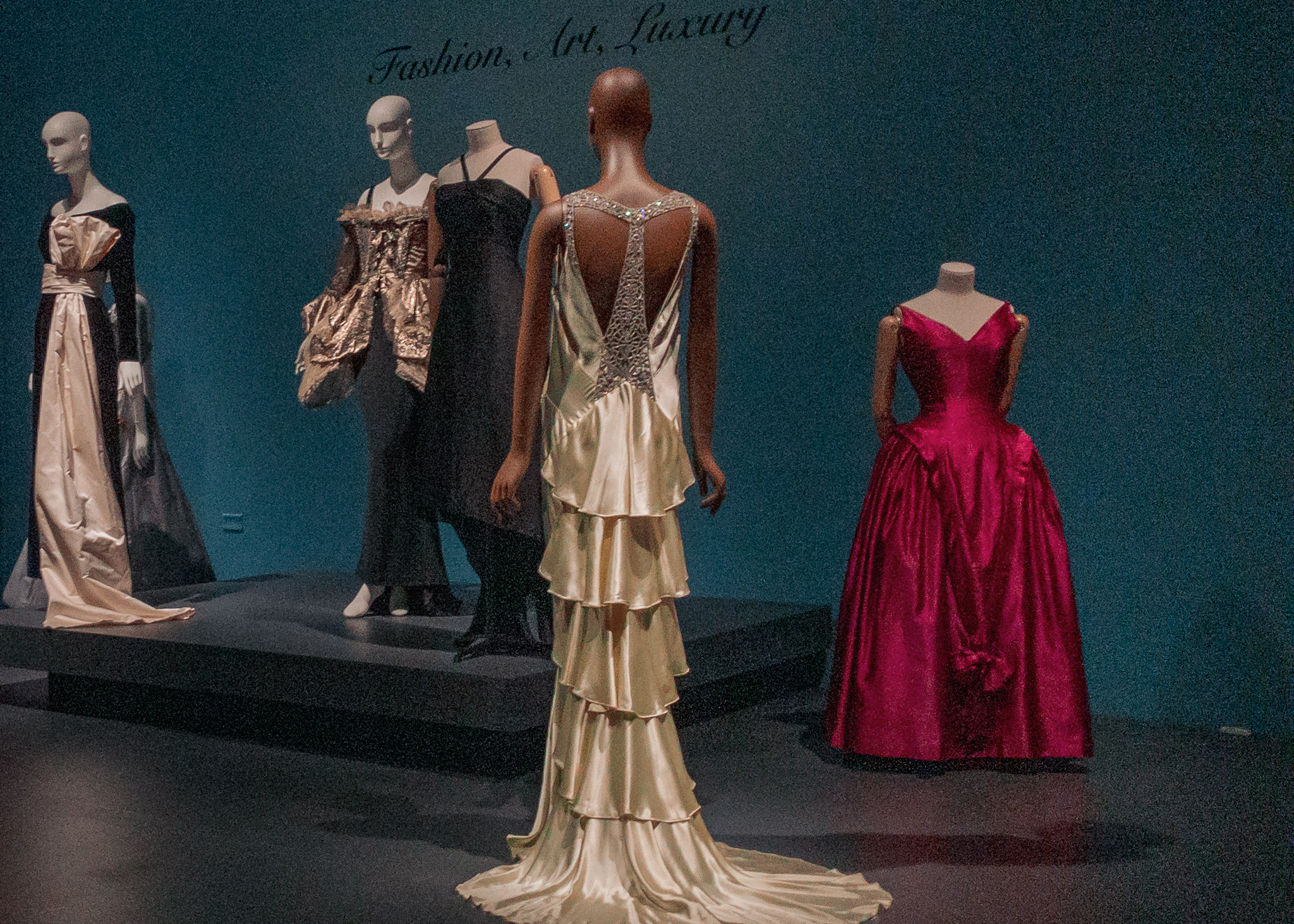Do you ever go somewhere — a movie, a show or a museum — just to tick a box? In the fall of 2019, I made a quick stopover in New York on my way home to Copenhagen from Kansas City. And at this exhibit, I ended up in Paris — at least momentarily.




On this particular trip to New York, I had five boxes to tick: Paris: Capital of Fashion, Pierre Cardin, Anna Sui, French Fashion and WWI, and The Sandy Schreier Collection — all in just two days!
I decided to start in Paris. I loved how this exhibit walked you through the history of fashion. This included an interesting look at the evolution, competition and consistency that define the fashions of Paris. The comparison between French fashion and the fashion industry as a whole, was particularly fascinating. Still today, the fashion industry seems to be both defined by and competing with Paris fashions.
When I visited Paris: Capital of Fashion, I was immersed in the history of French fashion.
Where Do We Begin?





The exhibit displayed an amazing array of understated elegance starting with 18th-century gowns. With each new dress I saw on display, there was no doubt that these elaborately detailed and beautifully crafted garments completely justify Paris’ position at the pinnacle of the fashion industry. Of special note was the impeccable craftsmanship.
The exhibit moves you quickly into the 20th century, where the real competition to Paris as the fashion capital of the world begins. It was obvious that the Parisienne dressmakers were talented, designing pieces of art meant to be worn.
One of my favorite dresses was this beautiful amber-colored gown. The tailored fit, the color, the printed silk and especially the subtle details. I was fascinated by the amount of work that had gone into creating the ruffles under the bustle. And the tiny pleated panelling beautifully framed the lapels, which was also found at the wrists of the jacket.

American Entrepreneurs Wanted a Piece of the Cake, Too!


Throughout the 19th century, the class system in America had evolved into something very different from that of Europe. In Europe there was a system of an inherited hierarchy, including titles and land ownership. In the U.S., money was the definition of power and gave access to whatever the bearer desired.
Up until this point, the world had looked to Paris for the latest fashions. This was mostly due to the fact that the Parisian dressmakers continually delivered designs that were coveted by the rich. But the manufacturers in the U.S. had an idea.


In the early 1900s, manufacturing was being optimized and machines were coming of age. This development enabled clothing manufacturers in the fashion industry to make cheaper copies of Paris “haute couture.” Machine-made clothes were the key to selling fashion to the masses.
Americans were inspired by the French fashion designs, so much so that they started copying the designs and producing at a much cheaper price. And so began the U.S. fashion industry’s reign as the leader in ready-to-wear fashions.
Today, American companies are extremely protective of their design trademarks and copyrights. They go to great lengths to protect their intellectual property rights. My guess is that the role that the US itself played in the past, and within this industry, might have something to do with that …



“If You Can’t Beat ‘Em, Join ‘Em”

By the 1940s, and after many years of being copied, the fashion houses in Paris decided that instead of being defeated they would find ways to work with their copycats. This strategy would enable them to protect their designs with patents and copyrights, and at the same time grant permission to manufacturers to produce the copies. The Parisian fashion industry soon found that their investment into these licensing collaborations was well worth it.
To illustrate this point, there were three versions of a Chanel suit superbly displayed in this exhibit at the Fashion Institute of Technology in New York. One of the suits was a copy, the second was an authorized and licensed suit, and the third was the original. The differences are subtle, but they become apparent the closer you look. For example, while the fabric may be the same, the position of the pockets on the jacket and the slit on the skirt are not.
Trademarks, Copyrights & Licensing … Oh My!
With this move by the French fashion industry, so began brand and design trademarks and copyrights on designer clothes and brands — one that is continually threatened by other countries that may feel differently than the U.S. or Europe about “borrowing with pride.” Many define this form of appreciation as “copying,” and some might even say it is stealing. Our influences and appreciation come in many forms, but where do we draw the line?


Paris, Long May You Reign …
Paris continues to prove its position as fashion capital by not compromising on what has defined it as a leader. Understated elegance and exquisite craftsmanship remain the hallmark of Paris fashion. This has enabled it to maintain a degree of autonomy.
As luxury struggles to maintain its status, I do not foresee Paris’ significance ever going away. Even if some of its influential designers may have to redefine what success looks like, Paris will undoubtedly find a way to continue as a leader in the fashion industry.

To learn more about the exhibit, click below:



what do you think?